Showing Spotlights 65 - 72 of 624 in category All (newest first):
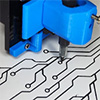 Researchers have developed a low-cost and simple method for printing electronics using regular pens and a benchtop plotter. This technique allows for the use of virtually any solution-processable nanomaterial ink without the need for expensive equipment or ink optimization, making printed electronics more accessible.
Researchers have developed a low-cost and simple method for printing electronics using regular pens and a benchtop plotter. This technique allows for the use of virtually any solution-processable nanomaterial ink without the need for expensive equipment or ink optimization, making printed electronics more accessible.
Apr 8th, 2023
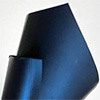 Researchers report remarkable quantum composites based on polymers with fillers comprised of a van der Waals material that reveals multiple quantum condensate phases. The quantum composites revealed unusually high dielectric constant while remaining electrically insulating.
Researchers report remarkable quantum composites based on polymers with fillers comprised of a van der Waals material that reveals multiple quantum condensate phases. The quantum composites revealed unusually high dielectric constant while remaining electrically insulating.
Mar 23rd, 2023
 Researchers demonstrate a new way to create chiral nanostructures using a laser beam. By carefully controlling the direction of the laser beam's vibrations, the researchers created a variety of chiral structures made of platinum oxide in unique shapes, like twisted micropillars and spiral superstructures.
Researchers demonstrate a new way to create chiral nanostructures using a laser beam. By carefully controlling the direction of the laser beam's vibrations, the researchers created a variety of chiral structures made of platinum oxide in unique shapes, like twisted micropillars and spiral superstructures.
Mar 22nd, 2023
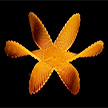 Hygromorphs are materials that can change their shape or size in response to changes in humidity or moisture. Synthetic hygromorphs, designed to have specific responses to changes in humidity, can be used in various applications, such as in sensors and actuators. A recent review generalizes a full design process for a 4D printed hygromorph which includes designing concepts, using additive manufacturing to produce designs, and measuring actuation.
Hygromorphs are materials that can change their shape or size in response to changes in humidity or moisture. Synthetic hygromorphs, designed to have specific responses to changes in humidity, can be used in various applications, such as in sensors and actuators. A recent review generalizes a full design process for a 4D printed hygromorph which includes designing concepts, using additive manufacturing to produce designs, and measuring actuation.
Mar 1st, 2023
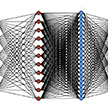 Perovskite solar cells (PSCs) are complex devices made up of multiple materials that have many different factors affecting their properties, which makes it difficult to analyze them comprehensively. Machine Learning (ML) can efficiently handle these complexities and help scientists in the design of new PSCs. We outline the current state and future prospects of ML in perovskite solar cell research, including data sources, feature extraction, algorithms, model validation, interpretation, and challenges.
Perovskite solar cells (PSCs) are complex devices made up of multiple materials that have many different factors affecting their properties, which makes it difficult to analyze them comprehensively. Machine Learning (ML) can efficiently handle these complexities and help scientists in the design of new PSCs. We outline the current state and future prospects of ML in perovskite solar cell research, including data sources, feature extraction, algorithms, model validation, interpretation, and challenges.
Feb 27th, 2023
 Inspired by living biological systems, which can sense, process information, and actuate in response to changing environmental conditions, researchers are exploring engineered living hydrogels. The convergence of engineering, biology, and materials science over the past 20 years is providing unprecedented opportunities to integrate living cells into these hydrogels. This integration yields engineered living hydrogels with the capabilities of self-replication, self-regulation, and environmental responsiveness.
Inspired by living biological systems, which can sense, process information, and actuate in response to changing environmental conditions, researchers are exploring engineered living hydrogels. The convergence of engineering, biology, and materials science over the past 20 years is providing unprecedented opportunities to integrate living cells into these hydrogels. This integration yields engineered living hydrogels with the capabilities of self-replication, self-regulation, and environmental responsiveness.
Jul 11th, 2022
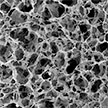 The development of efficient cooling technology based on environmentally friendly and biobased materials is crucial to many day-to-day activities. A novel, highly efficient cellulose nanocrystal aerogel radiative cooler acts as a dual-function thermal insulator and daytime passive radiant cooler. These aerogel coolers can save on average more than 35% in cooling energy consumption and they are capable of achieving a nearly 9 degree C drop under direct sunlight, they even work effectively in hot, moist, and fickle extreme surroundings.
The development of efficient cooling technology based on environmentally friendly and biobased materials is crucial to many day-to-day activities. A novel, highly efficient cellulose nanocrystal aerogel radiative cooler acts as a dual-function thermal insulator and daytime passive radiant cooler. These aerogel coolers can save on average more than 35% in cooling energy consumption and they are capable of achieving a nearly 9 degree C drop under direct sunlight, they even work effectively in hot, moist, and fickle extreme surroundings.
Jun 16th, 2022
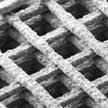 Although 4D printing is considered very promising for various biomedical applications - such as tissue scaffolds, neural scaffolds, grafts and stents, cardiac patches and valves, even bionic constructs - its broad-scale adoption for clinical use and tissue engineering purposes is complicated by a notable limitation of printable smart materials and the simplistic nature of achievable responses possible with current sources of stimulation. Nevertheless, 4D printing may offer a more favorable fabrication approach over 3D printing, as 4D constructs can respond to internal and/or external stimuli.
Although 4D printing is considered very promising for various biomedical applications - such as tissue scaffolds, neural scaffolds, grafts and stents, cardiac patches and valves, even bionic constructs - its broad-scale adoption for clinical use and tissue engineering purposes is complicated by a notable limitation of printable smart materials and the simplistic nature of achievable responses possible with current sources of stimulation. Nevertheless, 4D printing may offer a more favorable fabrication approach over 3D printing, as 4D constructs can respond to internal and/or external stimuli.
Jun 7th, 2022
 Researchers have developed a low-cost and simple method for printing electronics using regular pens and a benchtop plotter. This technique allows for the use of virtually any solution-processable nanomaterial ink without the need for expensive equipment or ink optimization, making printed electronics more accessible.
Researchers have developed a low-cost and simple method for printing electronics using regular pens and a benchtop plotter. This technique allows for the use of virtually any solution-processable nanomaterial ink without the need for expensive equipment or ink optimization, making printed electronics more accessible.
 Subscribe to our Nanotechnology Spotlight feed
Subscribe to our Nanotechnology Spotlight feed





